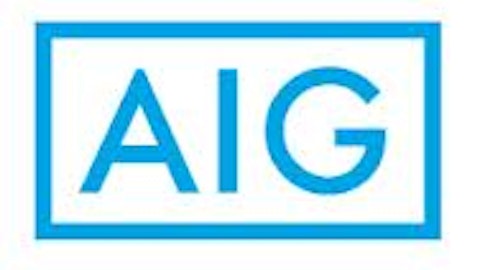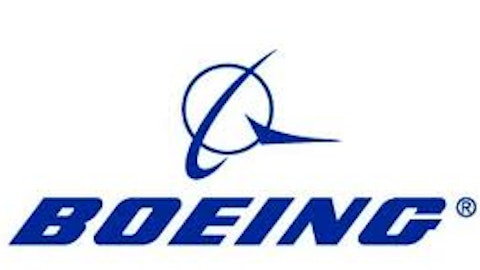Air Lease Corp (NYSE:AL) , is an aircraft-leasing company, owning 162 aircraft on lease to 71 customers in 41 countries as of March 31.
Why aircraft leasing is the best way to play the aviation industry
Firstly, global air travel is set to grow in a big way in the future. According to Airbus’ 2012 global market forecast, world passenger traffic is expected to grow by a 20- year CAGR of 4.7% in the 2012 through 2031 period, driven by increasing affluence in emerging markets, such as the Middle East, Latin America and the Asia Pacific. To meet this huge increase in demand for air travel, Airbus estimates that 28,200 new passenger and freight aircraft with a market value of $4 trillion will be required over the next two decades.
Secondly, airlines are increasingly favoring an asset-light model, in view of volatile capital markets and pressure on profit margins. Leasing aircraft, instead of owning them, will allow airlines to reduce their operating leverage and minimize the hit on profits when revenue swings the other way. Airlines currently own about 57% of mainline jets globally, down from 73% in 1990, based on data from Ascend. This represents the long-term shift of aircraft ownership from airlines to lessors.
Last but not least, lessors have better business models than airlines. Listed aircraft lessors remained profitable through the global financial crisis from 2008 through 2009 compared with many loss-making airlines during the same period. Also, lease contracts are typically multi-year in nature; unlike air travel, which is highly cyclical in nature.
Air Lease Corp (NYSE:AL) differentiates itself from other listed aircraft lessors with its direct OEM purchasing strategy and young aircraft portfolio.
Direct OEM purchasing strategy
While other listed lessors mostly buy used aircraft from airlines to minimize risks pertaining to funding and finding new leasing customers, Air Lease Corp (NYSE:AL) primarily purchases new aircraft from OEMs directly.
Air Lease derives two main advantages from this direct OEM purchasing strategy, similar to how companies in other industries benefit by buying directly from suppliers and cutting out the middleman. One advantage is that Air Lease Corp (NYSE:AL) typically gets a better deal from direct OEM purchases, with discounts flowing straight into the bottom line. Another advantage is that Air Lease, armed with the knowledge of aircraft-design trends obtained from its relationships with OEMs, has a strategic advantage in closing deals with its lessees.
Young aircraft portfolio
Air Lease Corp (NYSE:AL)’s current average aircraft age of 3.5 years is the lowest among its listed peers. It is easier to secure financing and new lessee customers for younger aircraft. In addition, younger aircraft typically require less maintenance and servicing, with lower downtime and impairment risks.
Maintaining a low average aircraft age also provides unexpected strategic benefits. Disposing of older aircraft helps to fund new aircraft orders with disposal proceeds, minimizing the need for excessive leverage. Moreover, Air Lease’s employees are not caught between the hunter and farmer roles, with a clear focus on winning new business instead of devoting too much attention to portfolio servicing.
Future outlook
For the first quarter of fiscal 2013, Air Lease Corp (NYSE:AL) grew quarterly revenue and diluted EPS by 45% and 46%, respectively, year-on-year. It acquired seven aircraft in the quarter; and is expected to capitalize on an A- credit rating from Kroll Bond Rating Agency to gain attractive access to capital markets for further expansion.
Peer comparison
Air Lease Corp (NYSE:AL)’s peers include Aircastle Limited (NYSE:AYR) and AerCap Holdings N.V. (NYSE:AER) .
Aircastle is focused on leasing of high-utility commercial jet aircraft, with a current portfolio of 158 aircraft on lease with 66 customers located in 36 countries. It grew lease rental and finance lease revenue for the first quarter of 2013 by 5% year-on-year to $160.5 million, partly boosted by aircraft acquisitions of $25.9 million. However, it is worth noting that Aircastle Limited (NYSE:AYR) terminated leases for five aircraft early due to lessee financial difficulties; this could be reflective of the higher credit risk of its customer base, in particular in emerging markets. Aircastle Limited (NYSE:AYR) generated more than half of its fiscal 2012 revenue from Asia, Middle East, Africa and Latin America.
Headquartered in Netherlands, AerCap Holdings N.V. (NYSE:AER) is one of the world’s largest aircraft lessors with 366 owned aircraft. Lease revenue for Aercap fell by 5% year-on-year from $252.7 million to $226.8 million in the first quarter of 2013. This as average lease assets decreased by 6% to $7.4 billion with the sale of its $1 billion asset-backed securitisation vehicle with a portfolio of 50 aircraft to Guggenheim Partners, a diversified financial firm, in November 2012.
Going forward, AerCap Holdings N.V. (NYSE:AER) plans to leverage $375 million of unrestricted cash and an un-drawn credit availability of $290 million to access attractive investment opportunities to expand its portfolio. However, I am negative on AerCap Holdings N.V. (NYSE:AER) given its high concentration of Airbus aircraft, representing more than 70% of net book value of its aircraft portfolio at the end of 2012.
Conclusion
Air Lease is valued at a premium to its peers with a P/B of 1.2, indicating that its competitive advantages of direct OEM purchasing and young aircraft portfolio age have largely been factored into its share price. I will advise investors to reconsider Air Lease Corp (NYSE:AL) on a share price pullback to below book value.
Mark Lin has no position in any stocks mentioned. The Motley Fool has no position in any of the stocks mentioned.
The article Renting Is Not Just a Good Business for Landlords originally appeared on Fool.com.
Mark is a member of The Motley Fool Blog Network — entries represent the personal opinion of the blogger and are not formally edited.
Copyright © 1995 – 2013 The Motley Fool, LLC. All rights reserved. The Motley Fool has a disclosure policy.



